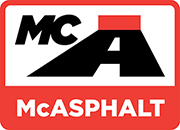Chemical surface-active agents, which serve as emulsifiers, are classified by the electrochemical charge that is attained when they dissociate in a water solution. In the case of cationic emulsions, the chemical charge is positive. The chemical type and quantity of surface-active agent used in the manufacturing process governs the process in which the resulting asphalt emulsion can be used.
Research – Usage of Emulsion Mixes to Mitigate the Effect of Subgrade Movements
1999 – Usage of Emulsion Mixes to Mitigate the Effect of Subgrade Movements – Croteau, Boston and Davidson
Research – Recovery Method on Properties of CQS Residues and Their Correlation to Micro Performance
2010-Recovery Method on Properties of CQS Residues and Their Correlation to Micro Performance-Kucharek and Davidson
Research – Adhesive and Cohesive Properties of RS Emulsions during Chip Seal Construction
2006-Adhesive and Cohesive Properties of RS Emulsions during Chip Seal Construction – Kucharek, Davidson and Croteau
Research – Overview of the Design of Emulsion Based Seal Coat Systems in Canada and Abroad
2005 – Overview of the Design of Emulsion Based Seal Coat Systems in Canada and Abroad-Davidson,Croteau,Houston and Linton
Research – A General Method of Design for Seal Coats and Surface Treatments
1969-A General Method of Design for Seal Coats and Surface Treatments-Norman McLeod
Research – Deep Cold In-Place Recycling with Emulsion Cement
1997 – Deep Cold In-Place Recycling with EmulsionCement – Favretti, Croteau and Davidson
